Ornamental grasses deserve more love than what they get. Don’t be fooled by their unassuming appearance because they’re more than just a clump of green blades. Ornamental grasses are some of the most tenacious species out there. Bluestems, fescue, and switch grass live in the prairie where they were trampled by buffalo and burned to the ground in wildfires – and they’d spring back to life. Sedges are related to those unkillable weeds that populate the lawn in damp areas. They’re tough!
These ornamental grasses are some of the newest ornamental grass selections for 2025. They all add year-round interest, color, and form to the garden. And they’re super-low maintenance as well.
Jump to:
- 1. Little Bluestem ‘Twilight Zone’
- 2. Carex ‘Moon Falls’
- 3. Festuca ‘Blue Whiskers’
- 4. Andropogon 'Lord Snowden'
- 5. Andropogon ‘Blackhawks’
- 6. Hakone Grass ‘Lemon Zest’
- 7. Switch Grass 'Half Pint'
- 8. Fountain Grass 'Lemon Squeeze'
- 9. Little Bluestem 'Brush Strokes'
- 10. Fescue 'Glow Sticks'
- 11. Little Bluestem ‘Blaze’
- 12. Dream Catcher® ‘Smoky Rose®' Switch Grass
- 13. Toffee Twist Sedge
1. Little Bluestem ‘Twilight Zone’
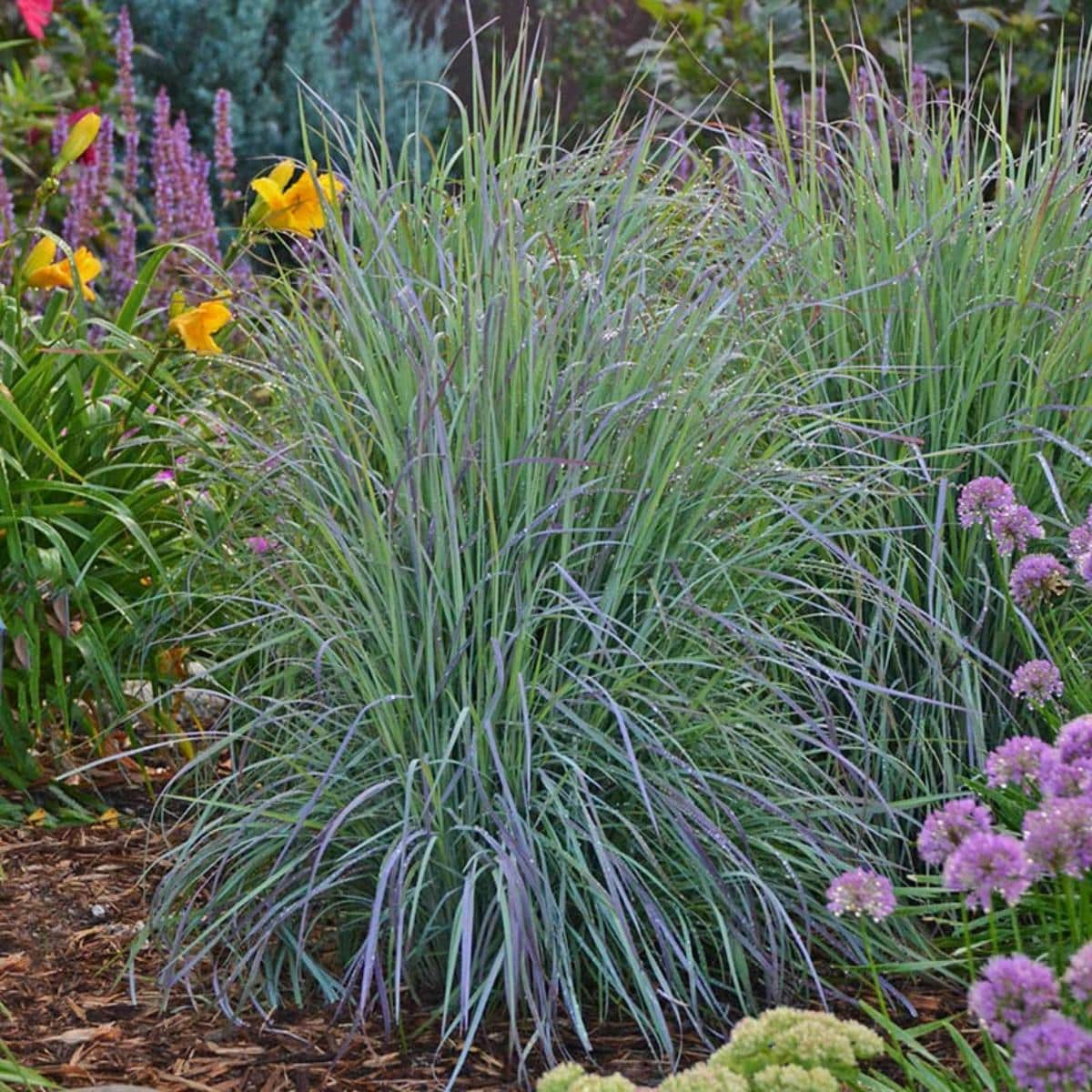
Little Bluestem (Schizachyrium scoparium) is a stunning native grass in its own right when growing in the wild – drought-tolerant, low-maintenance, and gorgeous. This ‘Twilight Zone’ selection adds iridescent, silvery-blue foliage with hints of purple to the grass, which becomes more eye-catching in mid to late summer. Its upright columnar growth habit adds an architectural element to ornamental and natural landscapes.
Little Bluestem is a larval host plant for nine skipper butterfly species and provides a place for insects and wildlife to survive winter. The foliage adds winter interest to the landscape and its seeds feed hungry winter birds. Its roots go deep into and helps break up compacted soil.
Available from High Country Gardens.
2. Carex ‘Moon Falls’
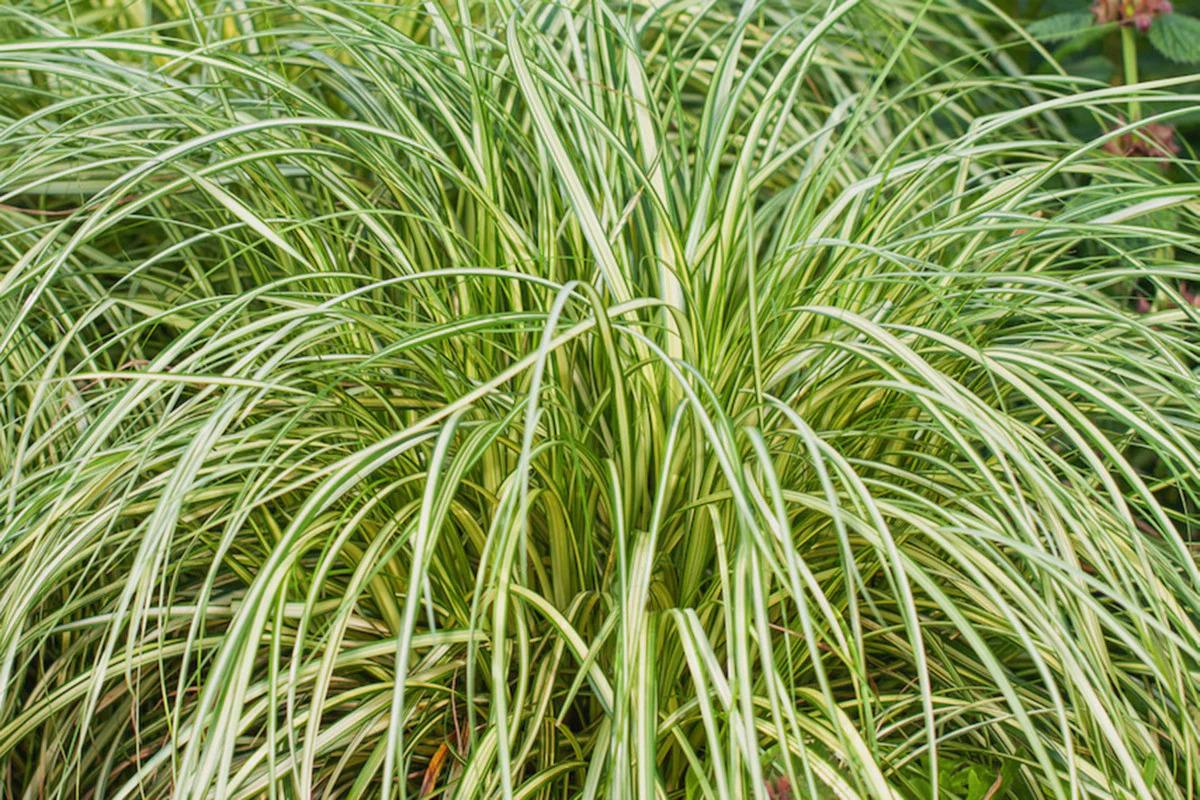
Carex x ‘Moon Falls’ is a handsome variegated sedge that is named after a gorgeous 100-foot waterfall in Oregon because its flowing habit resembles the water tumbling down the mountain. ‘Moon Falls’ grows in compact clumps, bearing fine foliage in creamy white and green. Plant in light shade with moist soil near large-leafed plants like hostas to add texture to the landscape. It also brightens container plantings and large pots.
Available from In the Country Garden & Gifts.
3. Festuca ‘Blue Whiskers’
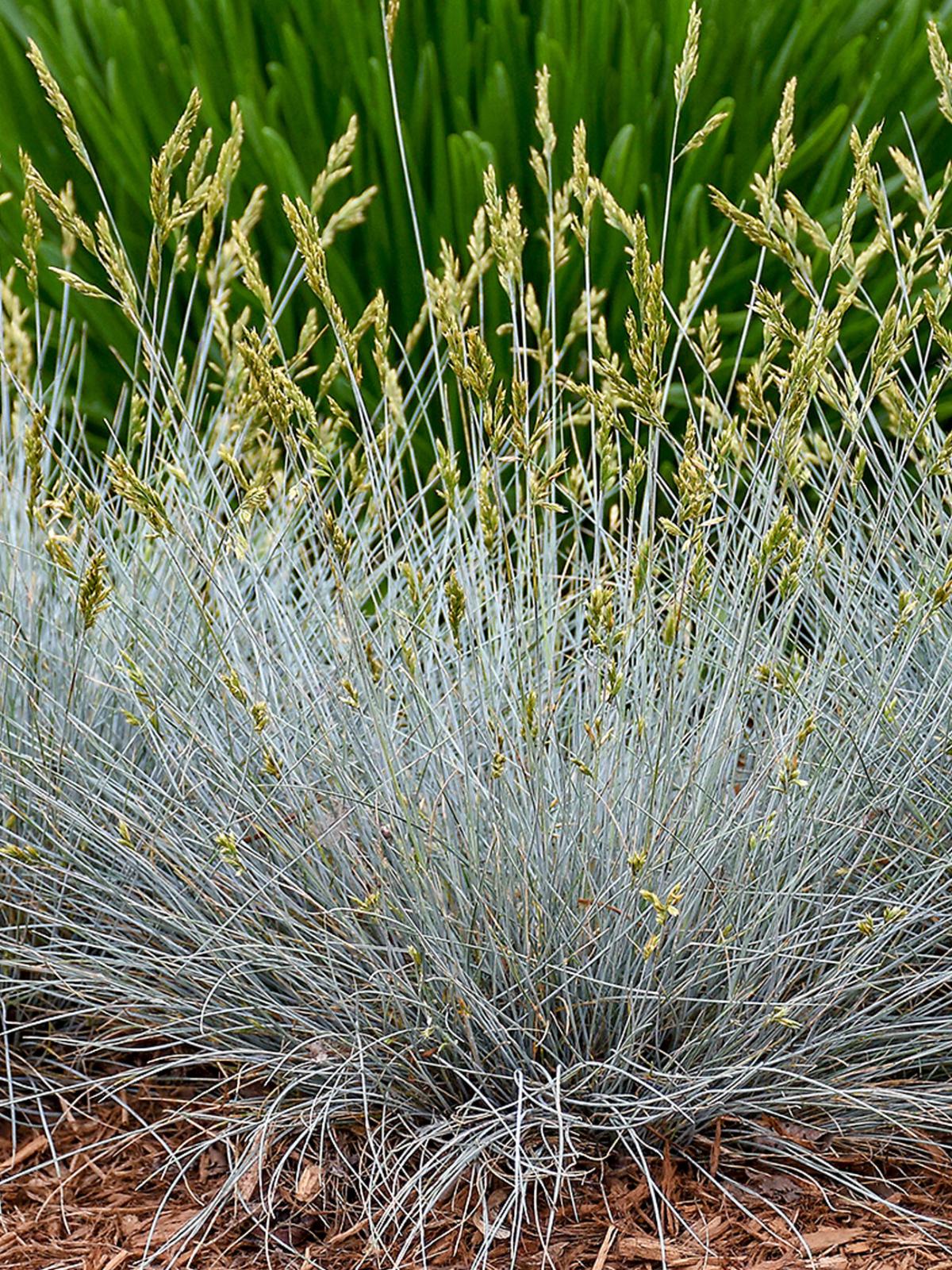
Blue Fescue
Blue Fescue is a delightful grass species that grows in evergreen, steel-blue tufts. Blue Whiskers, a taller version, provides additional beauty to the original. Blue Whiskers grows in fully rounded clumps with quill-like, silvery-blue blades. In early summer, yellow-green flower stalks rise above the symmetrical mound. As the year rolls on, the seedheads turn a buff-tan color. The plant grows with dense foliage with no gaps. Use Festuca Blue Whiskers as a stunning accent perennial, or grow them along walkways or garden edges. They can also act as the spiky element in hanging baskets or containers. Salt- and deer-tolerant, and they don’t need a lot of water. Zones 4 to 8.
Available from Bluestone Perennials.
4. Andropogon 'Lord Snowden'

Andropogon gerardii
'Lord Snowden' is a superb form of big bluestem discovered by Texas Master Naturalist John Snowden. Give it plenty of room because big bluestem grows from 5 to 8 feet tall. In late summer, the powder-blue foliage shoots up flower spikes that top out at 8 feet tall. Seed heads add fall interest, turning a brilliant red-orange. In the wild, big bluestem grows in alkaline soils, but it can also thrive on acidic soils.‘Lord Snowden’ shows incredible drought tolerance and durability. For best results, give it a sunny and dry area to display its splendor. This is an outstanding selection you’re going to be sure to love. Zones 4 to 8.
Available from Plant Delights Nursery, Inc.
5. Andropogon ‘Blackhawks’

Andropogon gerardii– Big Bluestem, Turkey Foot Grass
Blackhawks is a cultivar of the long-lived native grass called big bluestem. In spring, the blades emerge in deep greens and dark purples. By fall, the grass has turned a deep purplish black and looks lovely when it’s backlit with the autumn sun. In late summer, Big Bluestem throws up three-fingered seedheads that resemble a turkey’s foot – hence its other common name, turkey foot grass. Use Blackhawk Big Bluestem for privacy screens, erosion control (its roots run at least 6 feet deep), and restoring prairie areas. Provides nesting materials for songbirds and naturalizes readily. This grass will self-sow and give you baby big bluestems. Drought tolerant, deer resistant. Zones 3 to 9.
Available from Bluestone Perennials.
6. Hakone Grass ‘Lemon Zest’
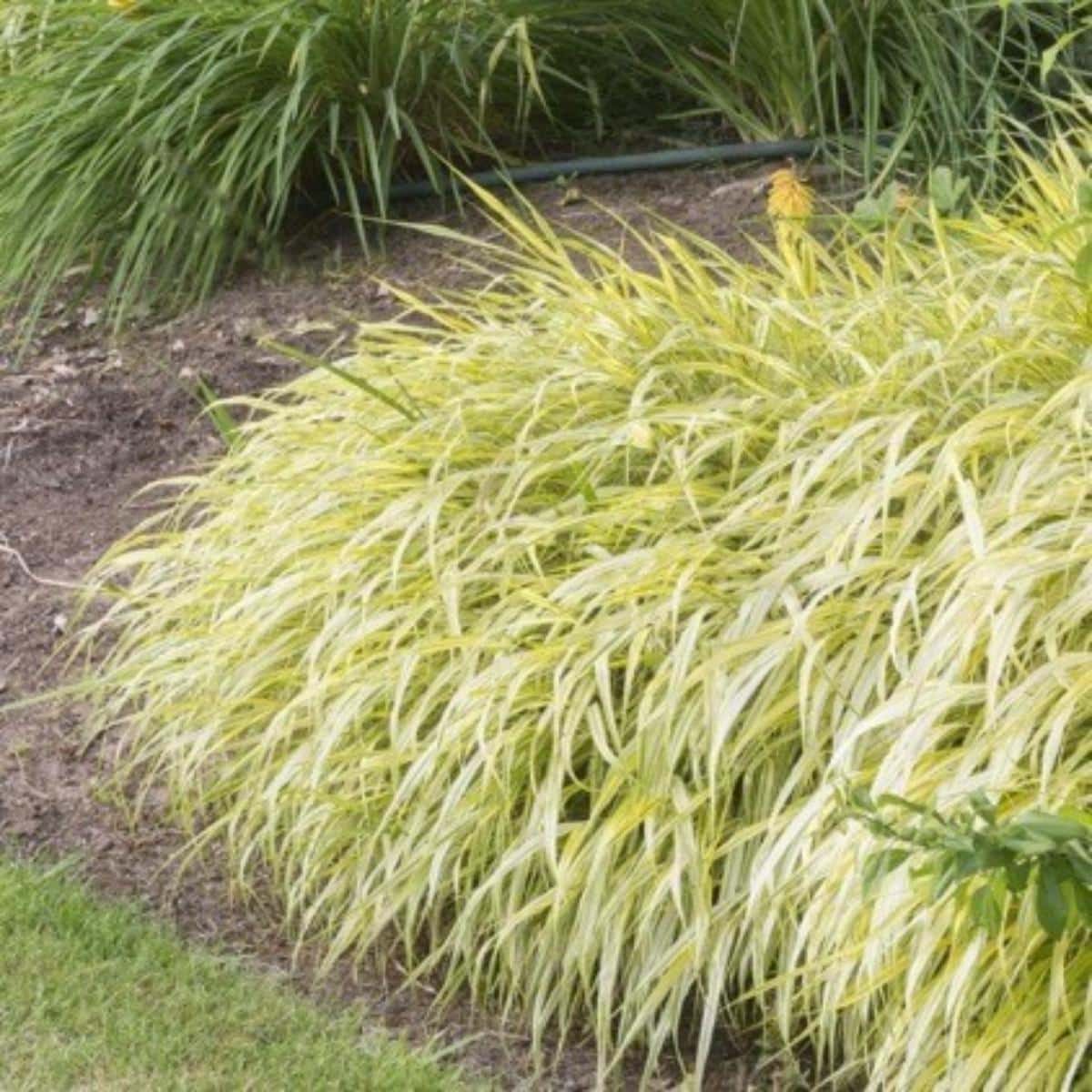
Hakonechola macra
We’ll take a moment to leave our native prairie grasses for a lovely forest grass from Japan. These slender blades in bright chartreuse, lemon yellow, and ivory light up the shade garden. Lemon Zest prefers to be planted in places like its native Japanese forest – cool, shady, with soil with lots of organic material that doesn’t dry out. The bamboo-like blades of Lemon Zest sway with the slightest breeze and resemble waterfalls. Plant in partial or full shade where it can create mounds, spill over walls or boulders, or act as a ground cover. Deer resistant. Zones 5 to 9.
Available from Almanac Planting Co.
7. Switch Grass 'Half Pint'
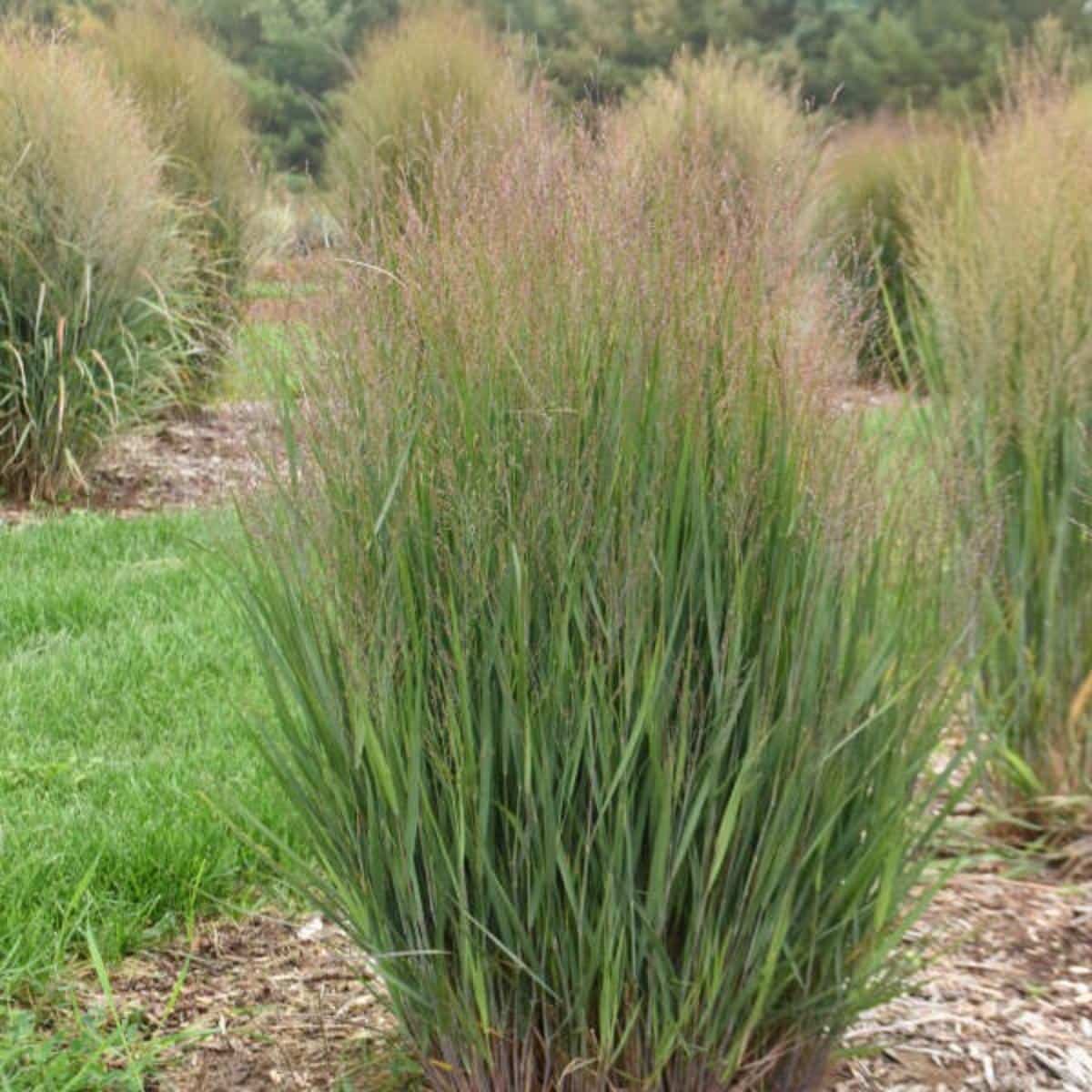
Panicum virgatum
A very compact switchgrass that grows only 3 feet tall. The plant is called switch grass because if you’re trying to walk through a big clump of them, the leaf blades can cut you like a switch! But this shouldn’t be a problem in the garden. This grass bears rose-red seedheads in fall while the leaves turn yellow-orange. Don’t cut back switchgrass in winter because it adds texture and color to the dull winter landscape. Birds also use it to hide from winter winds and to eat seeds.
Switchgrass is a versatile part of the landscape. Grow it as a specimen, in masses, for screening, alongside ponds or streams, or even in large containers. Zones 4 to 9.
Available from In the Country Garden & Gifts.
8. Fountain Grass 'Lemon Squeeze'

Pennisetum alopecuroides
Easy-peasy Lemon Squeezee, here’s a golden chartreuse wonder for your landscape. 'Lemon Squeeze' is a vigorous, gold-leafed Pennisetum that doesn’t burn in the sun – which is good because this plant needs full sun to get the brightest gold color. In spring, the plant bears lemon-yellow blades. Its long blades trail along the ground in mature plants, and they sway in the wind. Big, floofy, copper seedheads appear in midsummer, generously covering the whole shrub and nodding in the breeze. Cut it back in fall, or leave the blades standing for winter interest and to provide cover for birds and other small wildlife. Grows 3 to 4 feet tall. Zones 5 to 9.
9. Little Bluestem 'Brush Strokes'
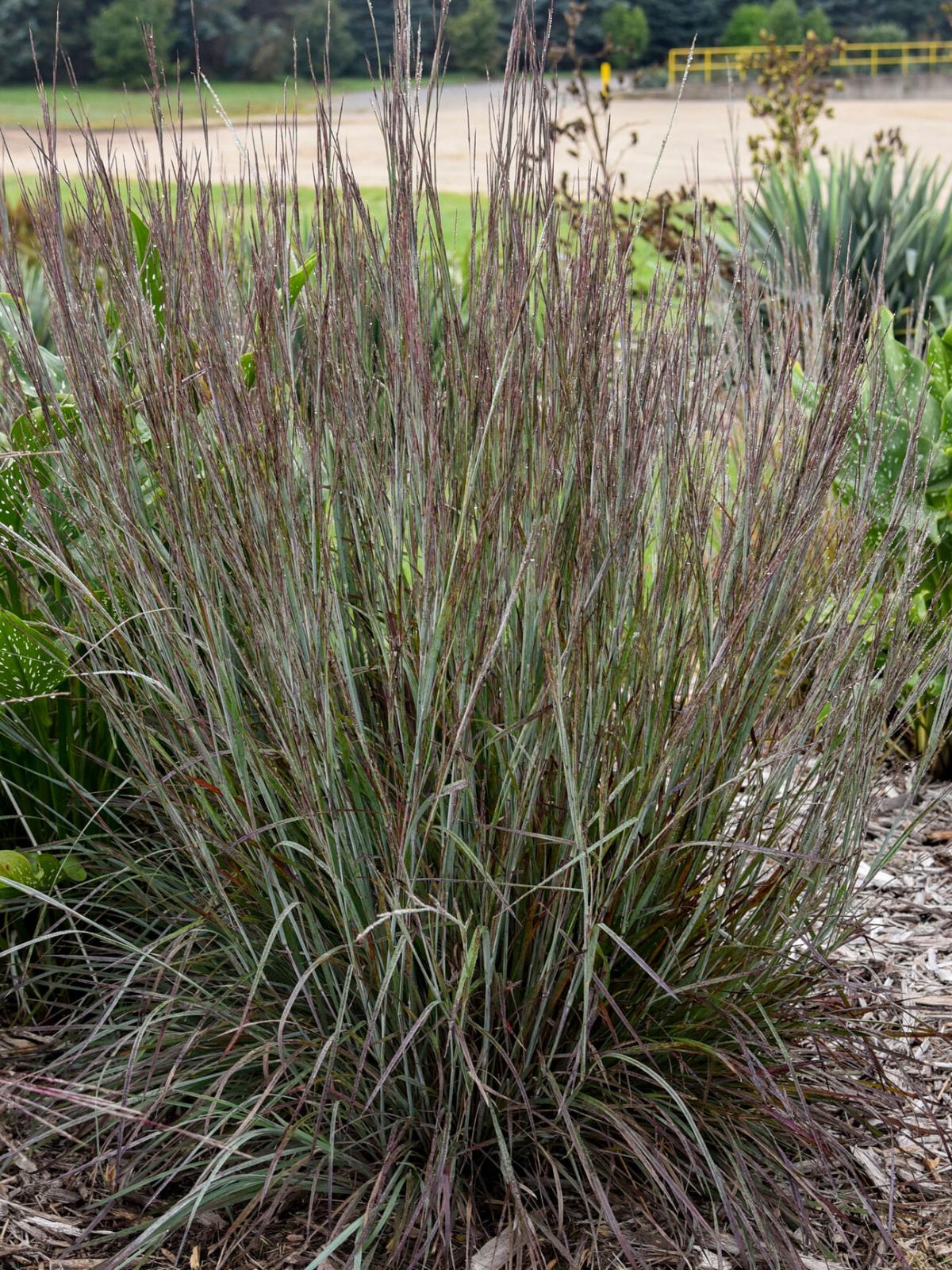
Schizachyrium scoparium
A lot of prairie grasses in this article! Here’s another little bluestem cultivar that looks amazing. 'Brush Strokes' little bluestem is part of the Prairie Winds® collection. The new stems start out silvery blue stems when they emerge in spring; then, through the year, they darken until they turn wine-red in early fall. In the meantime, bunches of airy seedheads appear in summer in a nice yellow-tan, slowly turning wine-red as well. It makes a lovely show. Use this native grass for its fine texture in summer, then leave it standing in the fall for winter interest.
With roots that penetrate 6 feet or more into the soil, ‘Brush Strokes’is a great choice if you need to restore an eroded site. This native grass will grow in hot, dry areas where other plants have a hard time surviving.
Available from Bluestone Perennials.
10. Fescue 'Glow Sticks'
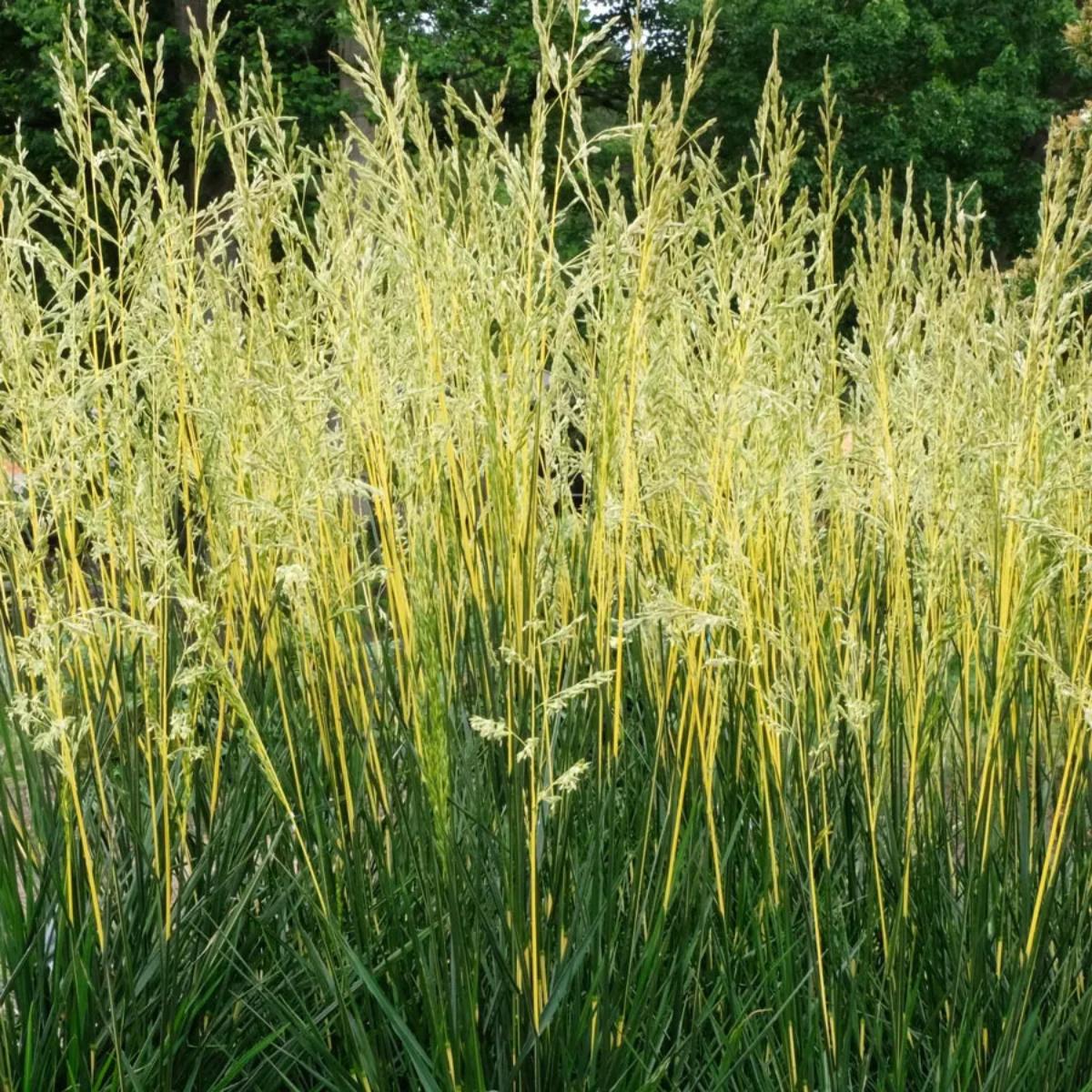
Festuca arundinacea
Fescue ‘Glow Sticks’ is cold hardy, drought tolerant, and easy to grow. This evergreen grass grows lemon-yellow spikelets that are downright gorgeous. The seedheads that follow attract birds to the garden and are good for small wildlife as well. 'Glow Sticks' is a long-lived, deep-rooted plant that works well in drought-prone areas or xeriscapes. Plant it in a mass for greater effect or in mixed beds and borders alongside perennials and shrubs. Hardy in zones 3 to 8.
Available from Wayside Gardens.
11. Little Bluestem ‘Blaze’
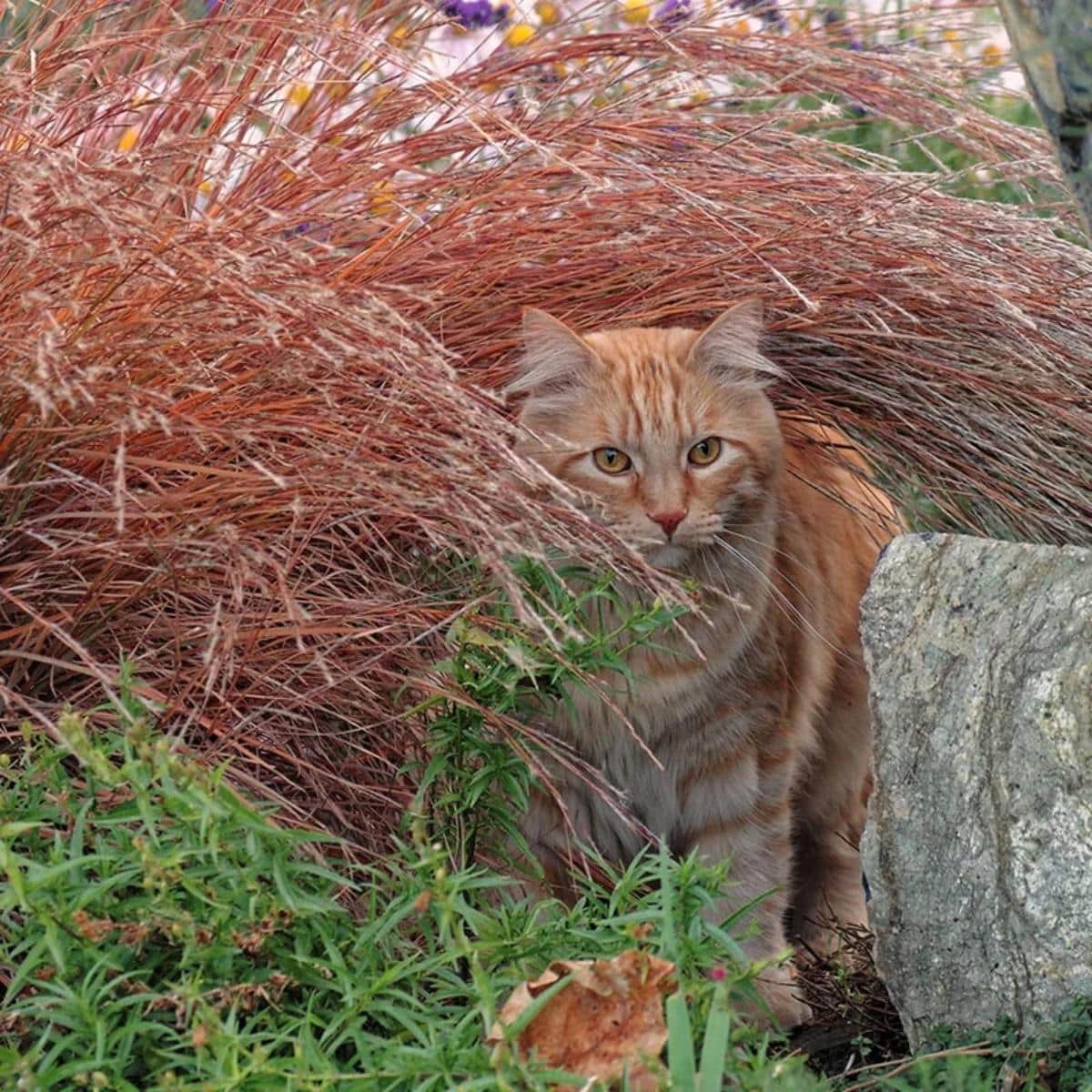
Schizachyrium scoparium
'Blaze' Little Bluestem grass is best known for its exceptional fall color. In spring, it has slender blue-green foliage; in fall, it turns a lovely, deep red, then matures to a brilliant pink for winter. Reddish-brown flowers and seedheads turn silver-white in winter. Schizachyrium scoparium 'Blaze' looks great with flowering perennials in a mixed border. Naturally, being a prairie plant, it’s drought-tolerant (xeric), and it just looks great.
Available at High Country Gardens.
12. Dream Catcher® ‘Smoky Rose®' Switch Grass
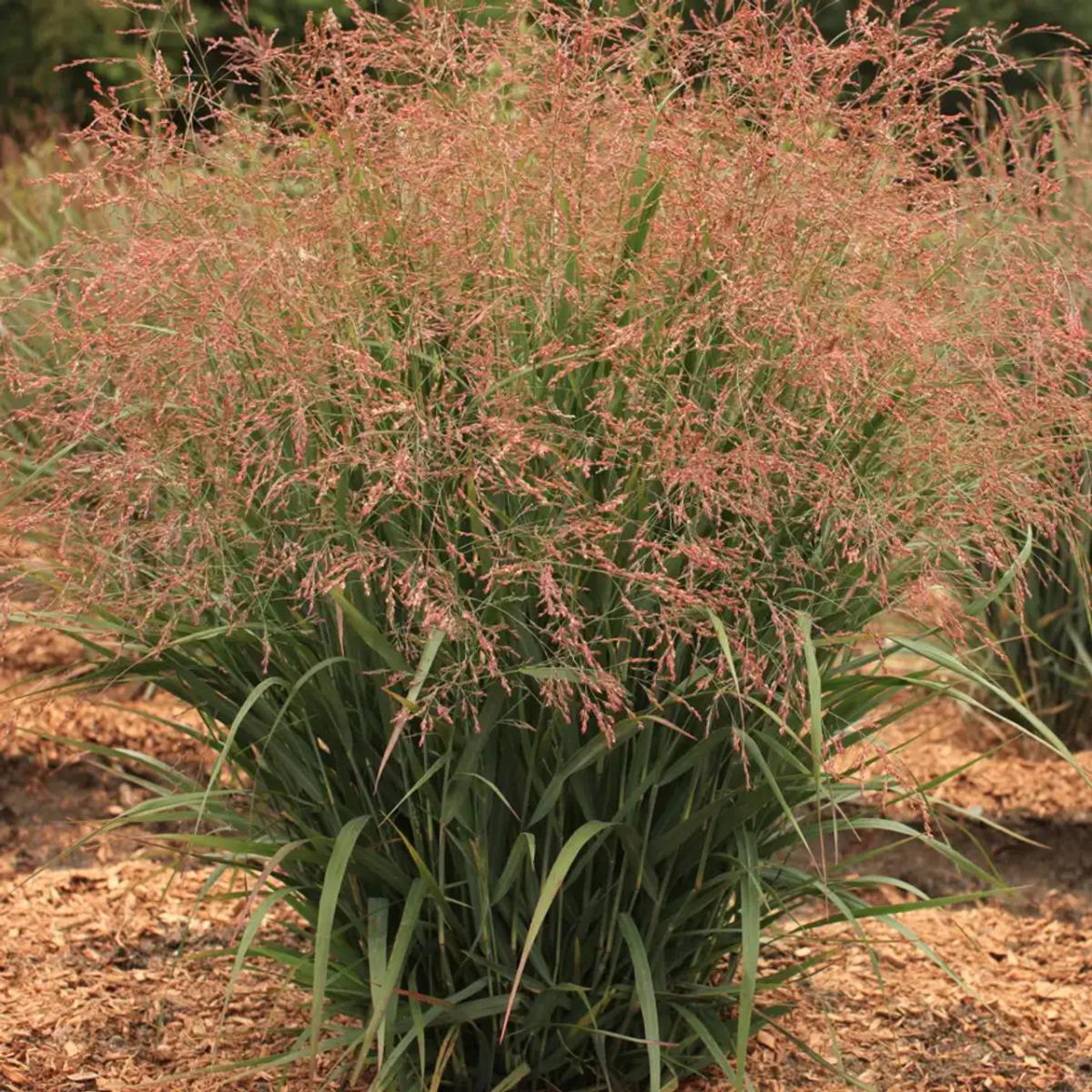
Panicum virgatum
Another fine denizen of the prairie. ‘Smoky Rose’ bears dark green foliage that turns into rich shades of deep burgundy and bronze. It crowns itself with billows of smoky-rose flowers from late summer into fall, and they persist into winter. This native switchgrass cultivar stands up to wind, rain, and pops back like a phoenix after wildfires. Standing tall with a wispy texture, it is ideal for adding movement to flower beds or borders. Grow to 3.5 feet tall. Zones 4 to 10.
Not yet available in commerce; look for it later in 2025.
13. Toffee Twist Sedge

Carexflagellifera
It should be grown as an annual north of zone 7, where temperatures get colder than 5 degrees F. Bears copper-colored blades all season long. It’s grown for its cascading habit and the lovely shape and color of its slender blades. A cool-season grass growing only about 2 feet tall. Use in large plantings, as a border or walkway edging, a groundcover, or a woodland garden. This softly spiking grass adds height and drama to any container. Sedges prefer moist soil, and this one is no exception – don’t let it dry out. Zones 7 to 10.
Read more gardening advice from Rosefiend Cordell.

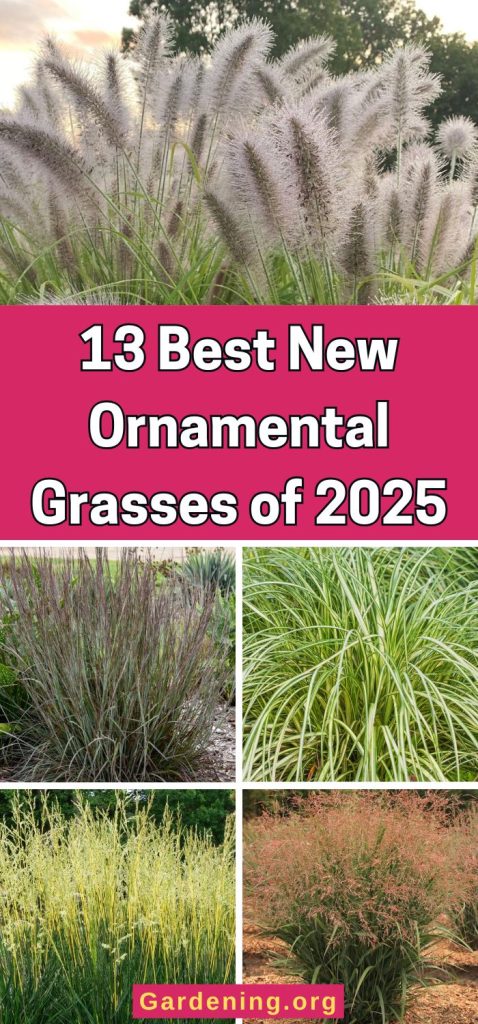


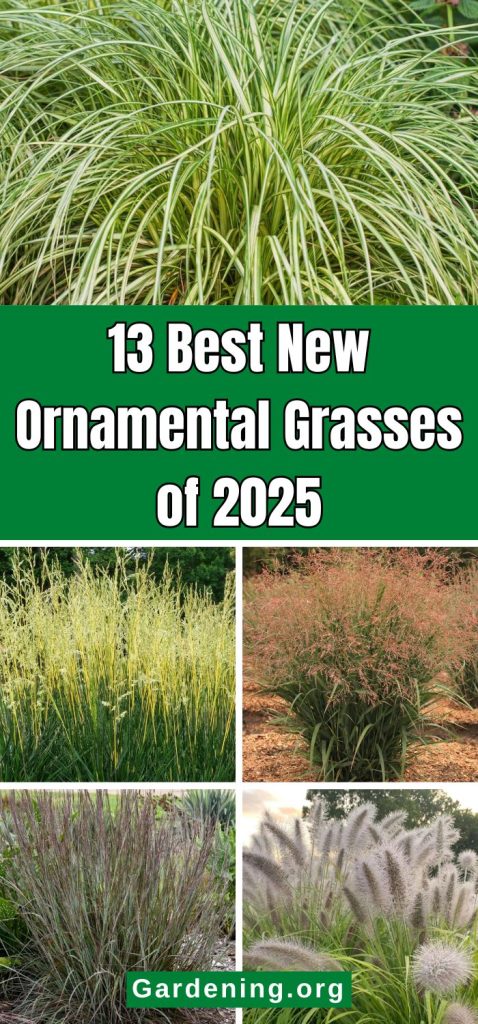

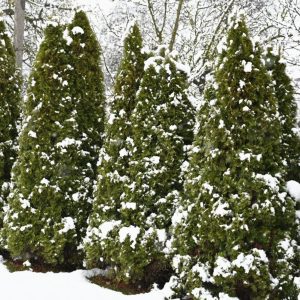
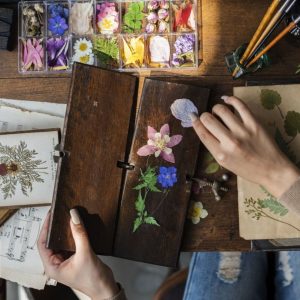
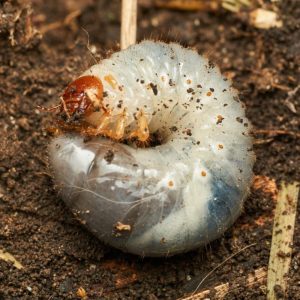
Leave a Reply